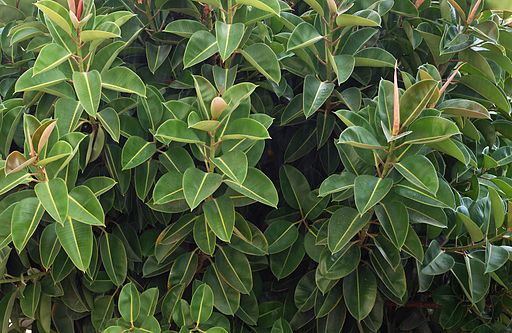Indoor air pollution is a silent foe in the quest for a healthier home environment. According to the Environmental Protection Agency (EPA), the levels of indoor air pollutants are often 2 to 5 times higher than outdoor levels, and in some cases, these figures can exceed 100 times that of outdoor levels. Common indoor pollutants include volatile organic compounds (VOCs) from paints and furnishings, formaldehyde from insulation and plywood, and benzene and xylene from printed materials and electronic devices.
These pollutants can contribute to ‘sick building syndrome,’ which affects the health and productivity of inhabitants by causing symptoms ranging from headaches, dizziness, and nausea to severe respiratory and dermatological problems. Fortunately, one of the easiest and most effective ways to combat this invisible enemy is by cultivating house plants. Not only do they add a touch of nature’s beauty to our homes, but they also have remarkable abilities to purify the air. Here’s a guide to the top 10 house plants known for their air-cleaning properties.
1. Spider Plant

DenesFeri, CC BY-SA 4.0, via Wikimedia Commons
Ideal for: Beginners and those with little time for plant care.
Benefits: Spider plants excel in removing harmful chemicals like formaldehyde and xylene from the air. They are easy to maintain, thriving in indirect sunlight and cooler climates, making them a versatile choice for various indoor environments.
2. Snake Plant

Martin Olsson, CC BY-SA 3.0, via Wikimedia Commons
Ideal for: Bedrooms and low-light areas.
Benefits: Known for its durability, the snake plant is particularly adept at filtering out formaldehyde, which is commonly emitted from cleaning products and personal care items. Interestingly, it converts CO2 into oxygen during the night, promoting better air quality while you sleep.
3. Peace Lily

Audrey from Central Pennsylvania, USA, CC BY 2.0, via Wikimedia Commons
Ideal for: Moist spaces like bathrooms.
Benefits: Peace lilies are highly praised for their efficiency in removing air toxins such as ammonia, benzene, formaldehyde, and trichloroethylene. They thrive in shady spots and occasionally produce stunning white blooms, enhancing indoor aesthetics.
4. Boston Fern

Tbatb, CC BY-SA 4.0, via Wikimedia Commons
Ideal for: Cooler locations with high humidity and indirect light.
Benefits: This lush plant is a natural humidifier and excels at purging the air from formaldehyde and xylene. Keep the soil consistently moist for optimal growth and air purification.
5. Bamboo Palm

KENPEI, CC BY-SA 3.0, via Wikimedia Commons
Ideal for: Office settings or homes with wooden furnishings.
Benefits: Bamboo palms are not only stylish but also effective at eliminating benzene, formaldehyde, and trichloroethylene. They prefer bright light and can enhance any room with their tropical flair.
6. Aloe Vera

Dandarmkd, CC BY-SA 4.0, via Wikimedia Commons
Ideal for: Kitchen areas with ample sunlight.
Benefits: Besides its skin healing properties, aloe vera helps improve indoor air quality by filtering out formaldehyde and benzene. This plant is best placed in sunny spots and requires minimal watering.
7. Gerbera Daisy

Adeep309, CC BY 4.0, via Wikimedia Commons
Ideal for: Warm climates and those desiring a pop of color.
Benefits: Effective at removing trichloroethylene, which may linger on your dry cleaned items. Gerbera daisies also target benzene pollution and need plenty of light to thrive.
8. Rubber Plant

Alvesgaspar, CC BY-SA 4.0, via Wikimedia Commons
Ideal for: Decor corners in dimly-lit areas.
Benefits: With minimal light requirements and significant resistance to under-watering, rubber plants are excellent for beginners. They specialize in removing air toxins like formaldehyde.
9. English Ivy

Dandy1022, CC BY-SA 4.0, via Wikimedia Commons
Ideal for: Offices or as decorative hanging plants.
Benefits: English ivy helps reduce airborne mold levels, making it ideal for allergy sufferers. It prefers moderate sunlight and slightly dry conditions.
10. Chrysanthemum

Jebulon, CC0, via Wikimedia Commons
Ideal for: Spots that get direct sunlight, like living rooms.
Benefits: Chrysanthemums are not only visually appealing but also highly effective at cleansing the air of benzene. They do require a bit more care, especially to bloom indoors, but their colorful presence is a worthwhile addition to any room.
Incorporating house plants into your indoor space can significantly improve air quality while adding a refreshing touch of nature to your home décor. These plants offer a simple yet effective solution to reduce pollutant levels, potentially enhancing your overall health and well-being. Whether you’re a seasoned plant enthusiast or a novice, each plant on this list can contribute to a cleaner, healthier indoor atmosphere.
